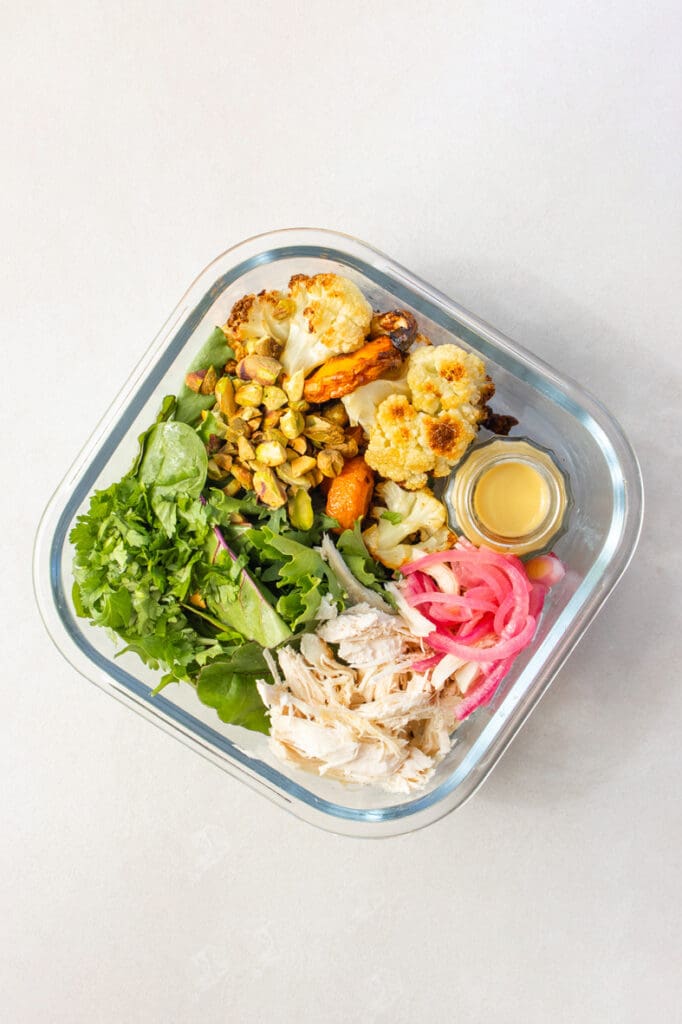Be generous with the oil
Use a good quality olive oil or coconut oil and enough of it. Drizzle the vegetables with a generous amount of oil (it should be between 1 -2 tbsp depending on the size of your tray). Use your hands to help distribute the oil, coating every vegetable.
Oil will help the vegetables to cook evenly, get crispy, add flavour and helps you to absorb fat-soluble vitamins like A, D, E, and K.
Don’t overcrowd the tray
Make sure to give the vegetables enough space on the tray, cramming the tray will create a steaming effect, which is not going to help achieve the golden exterior you’re after. Split the vegetables between two trays if you need to.
Avoid using baking paper when you can (usually if there isn’t any marinade, the vegetables will not stick to the tray). The direct contact with the baking tray will conduct heat, helping the veggies get extra crispy!
Don’t forget to season
Salt is key to creating caramelised roasted veggies! We always make sure to add a generous pinch of salt when we add the oil. If you’re wanting to add extra flavour to your roasted veggies now is also the time to add other seasonings like pepper, spice blends, or sturdy herbs like rosemary and thyme.
Cut your veggies to the same size
Make sure you’re cutting veggies to the same size to ensure even cooking.
Preheat the oven
Make sure your oven has reached temp before adding the vegetables to cook.
Roast until cooked and crispy (aka charred)
To check if your vegetables are cooked, pierce them with a fork, they should be tender. Then look to see if they are golden and slightly charred around the edges. If they aren’t keep cooking for 5-10 minutes longer, even if they are tender in the centre, it’s the golden / charring that makes roasted vegetables so delicious and sets them apart from being steamed or sautéed.
Cooking times
Cooking times are for roasting vegetables at 200-220 degrees celsius, fan bake.
*time will vary depending on how small you cut them. This is based on ‘bite-sized’ pieces.
- Potatoes, beetroot, carrots and onions 30 to 45 minutes
- Pumpkin, zucchini, eggplant, capsicums 20 to 40 minutes
- Broccoli, cauliflower, Brussels sprouts: 15 to 25 minutes









